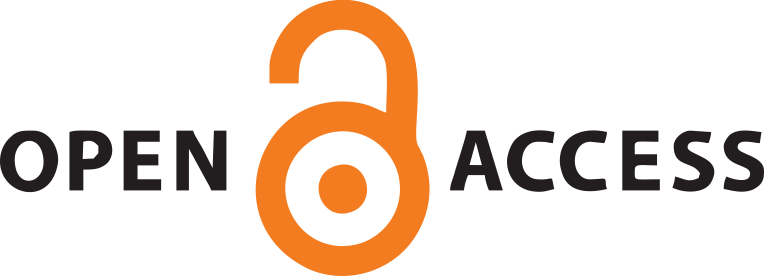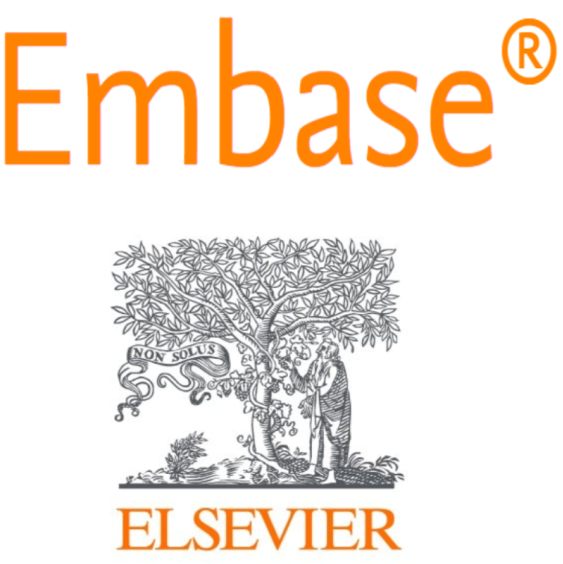Determinants of Households’ Access to Improved Water Sources, Sanitation and Handwashing facilities among Under-18 Orphans: A Secondary Analysis of 2018 Demographic Health Surveys
DOI:
https://doi.org/10.56101/rimj.v4i1.138Keywords:
Water, Sanitation, Handwashing facilities, Orphans, Demographic and Health SurveyAbstract
Background: This study aimed to investigate households’ access to improved water sources, sanitation and handwashing facilities among under-18 orphans in Nigeria.
Methods: Data were obtained from the 2018 Nigerian Demographic and Health Survey. A total of 6152 orphans were included. Access to improved water, sanitation and presence of handwashing facilities were the main outcome variable. SPSS version 26.0 was used for data analysis. Statistical significance was declared at p < 0.05.
Results: The respondents mean age was 10.5±4.5years which about half (50.3%) were female. Respondents from rural areas were 73.8% less likely to have access to improved source of water supply compared to those who were from urban areas (OR=0.262, CI: 0.231-0.297). Also, those with higher education were 9.2 times more likely to have access to improved sanitation as compared to those who had no education (OR=9.212, CI: 1.131-75.005). Also, orphans from rural communities were 13.8% less likely to have access to basic hand washing facilities compared to those who were from urban communities (OR=0.862, CI: 0.762-0.976).
Conclusion: This study revealed that some socio-demographic characteristics were significant determinants to access to improved water, sanitation and presence of handwashing facilities in the households.
References
World Health Organization. Progress on drinking water and sanitation: 2017 update and SDG baselines. Geneva. 2017. https://www.who.int/publications-detail-redirect/9789241512893
Simelane MS, Shongwe MC, Vermaak K, Zwane E. Determinants of households’ access to improved drinking water sources: a secondary analysis of Eswatini 2010 and 2014 multiple indicator cluster surveys. Adv. Public Health. 2020:1–9. https://doi.org/10.1155/2020/6758513
United Nations. Nations resolution on human right to water and sanitation. New York, USA. 2010. https://www.un.org/waterforlifedecade/human_right_to_water.shtml#:~:text=The%20human%20right%20to%20water%20and%20sanitation&text=On%2028%20July%202010%2C%20through,realisation%20of%20all%20human%20rights.
World Health Organization. Sanitation. Geneva. 2022. https://www.who.int/news-room/fact-sheets/detail/sanitation.
Ezeh OK, Agho KE, Dibley MJ, Hall J, Page AN. The impact of water and sanitation on childhood mortality in Nigeria: evidence from demographic and health surveys, 2003–2013. Int. J. Environ. Res. Public Health. 2014;11(9):9256-9272. https://doi.org/10.3390/ijerph110909256
Al-Jobair AM, Al-Sadhan SA, Al-Faifi AA, Andijani RI, Al-Motlag SK. Medical and dental health status of orphan children in central Saudi Arabia. Saudi Med. J. 2013; 34(5):531-536.
Khare V, Koshy A, Rani PJ, Srilatha S, Kapse SC, Agrawal A. Prevalence of dental caries and treatment needs among the orphan children and adolescents of Udaipur district, Rajasthan, India. J. Contemp. Dent. 2012;13(2):182-187. https://doi.org/10.5005/jp-journals-10024-1118
UNICEF. Monitoring the Situation of Women and Children. 2021. https://data.unicef.org/topic/hivaids/orphanhood/#
Ojahanon PI, Akionbare O, Umoh AO. The oral hygiene status of institution dwelling orphans in Benin City, Nigeria. Niger. J. Clin. Pract. 2013;16(1):41-44. https://doi.org/10.4103/1119-3077.106732
Prüss‐Ustün A, Bartram J, Clasen T, Colford Jr JM, Cumming O, Curtis V, Bonjour S, Dangour AD, De France J, Fewtrell L, Freeman MC. Burden of disease from inadequate water, sanitation and hygiene in low‐and middle‐income settings: a retrospective analysis of data from 145 countries. Trop. Med. Int. Health. 2014;19(8):894-905. https://doi.org/10.1111/tmi.12329
Agbadi P, Darkwah E, Kenney PL. A multilevel analysis of regressors of access to improved drinking water and sanitation facilities in Ghana. Int. J. Environ. Res. Public Health. 2019:1-11. https://doi.org/10.1155/2019/3983869
Brookes JD, Carey CC. Ensure availability and sustainable management of water and sanitation for all. U.N. Chron. 2015;51(4):15–16. https://doi.org/10.18356/d694f52d-en
World Health Organization. Water, sanitation, hygiene, and waste management for the COVID-19 virus: interim guidance. Geneva. 2020. https://www.who.int/publications/i/item/WHO-2019-nCoV-IPC-WASH-2020.4
Behnke N, Cronk R, Snel M, Moffa M, Tu R, Banner B, Folz C, Anderson D, Macintyre A, Stowe E, Bartram J. Improving environmental conditions for involuntarily displaced populations: water, sanitation, and hygiene in orphanages, prisons, and refugee and IDP settlements. J Water Sanit Hyg Dev. 2018;8(4):785-791. https://doi.org/10.2166/washdev.2018.019
Saxena SK, Kumar S, Haikerwal A, Bhatt ML. Introductory chapter: neglected tropical waterborne infectious diseases-strategies for mitigation. Water Challenges of an Urbanizing World. 2018. https://dx.doi.org/10.5772/intechopen.74322
Mills JE, Cumming O. The impact of water, sanitation and hygiene on key health and social outcomes. Sanitation and Hygiene Applied Research for Equity (SHARE) and UNICEF. 2016. https://www.researchgate.net/profile/Joanna-Esteves-Mills/publication/319503296_The_impact_of_water_sanitation_and_hygiene_on_key_health_and_social_outcomes_review_of_evidence/links/59afa924458515150e4b0a73/The-impact-of-water-sanitation-and-hygiene-on-key-health-and-social-outcomes-review-of-evidence.pdf
Mulenga JN, Bwalya BB, Chishimba KK. Determinants and inequalities in access to improved water sources and sanitation among the Zambian households. J. Sustain. Dev. Plan. 2017;6:746–762.
Tuyet-Hanh TT, Long TK, Van Minh H. Longitudinal household trends in access to improved water sources and sanitation in Chi Linh town, Hai Duong province, Viet Nam and associated factors. AIMS Public Health. 2016;3(4):880. https://doi.org/10.3934/publichealth.2016.4.880
Kumari A, Marya C, Oberoi SS, Nagpal R, Bidyasagar SC, Taneja P. Oral Hygiene Status and Gingival Status of the 12-to 15-year-old Orphanage Children Residing in Delhi State: A Cross-sectional Study. International Journal of Clinical Pediatric Dentistry (2021) 14(4):482. https://doi.org/10.5005/jp-journals-10005-1989
Eke CB, Obu, HA, Chinawa, JM, Adimora, GN, Obi, I.E. Perception of child adoption among parents/care givers of children attending pediatric outpatients’ clinics in Enugu, South East, Nigeria. Niger. J. Clin. Pract. 2014;17(2):188-195. https://doi.org/10.4103/1119-3077.127549
Watts H, Gregson S, Saito S, Lopman B, Beasley M, Monasch R. Poorer health and nutritional outcomes in orphans and vulnerable young children not explained by greater exposure to extreme poverty in Zimbabwe. Trop. Med. Int. Health. 2007;12(5):584-593. https://doi.org/10.1111/j.1365-3156.2007.01832.x
Andualem Z, Dagne H, Azene ZN, Taddese AA, Dagnew B, Fisseha R, Muluneh AG, Yeshaw Y. Households access to improved drinking water sources and toilet facilities in Ethiopia: a multilevel analysis based on 2016 Ethiopian Demographic and Health Survey. BMJ open. 2021;11(3):e042071. https://doi.org/10.1136/bmjopen-2020-042071
The World Bank. Nigeria: Ensuring Water, Sanitation and Hygiene for All. 2021. Accessed from: https://www.worldbank.org/en/news/feature/2021/05/26/nigeria-ensuring-water-sanitation-and-hygiene-for-all
Onyeabor EN, Umeh GN. Access to improved toilet facilities among predominantly farming communities in Izzi local government area of Ebonyi State, Nigeria. Environ. Earth Sci. 2019;9(11). https://doi.org/10.7176/JEES/9-11-12
Bekele T, Rahman B, Rawstorne P. The effect of access to water, sanitation and handwashing facilities on child growth indicators: evidence from the Ethiopia demographic and health survey 2016. PLoS One. 2020. 15(9):e0239313. https://doi.org/10.1371/journal.pone.0239313
Kebede SA, Tusa BS, Weldesenbet AB. Spatial distribution and determinant factors of handwashing practice with essential agents among households in Ethiopia. Int. J. Public Health. 2022: 46. https://doi.org/10.3389/ijph.2022.1604040 .
Appleton S., 2000. Education and health at the household level in sub-Saharan Africa. CID Working Paper Series.
Tessema ZT, Worku MG, Tesema GA, Alamneh TS, Teshale AB, Yeshaw Y, Alem AZ, Ayalew HG, Liyew AM. Determinants of accessing healthcare in Sub-Saharan Africa: a mixed-effect analysis of recent Demographic and Health Surveys from 36 countries. BMJ open, 2022;12(1):p.e054397. https://doi.org/10.1136/bmjopen-2021-054397
Abubakar IR. Access to sanitation facilities among Nigerian households: determinants and sustainability implications. Sustainability. 2017;9(4):547. https://doi.org/10.3390/su9040547
Prasetyoputra P, Irianti S. Access to improved sanitation facilities in Indonesia: An econometric analysis of geographical and socioeconomic disparities. J. Appl. SCI. Environ. Manag. 2013;8(3):215-224.
Morakinyo OM, Adebowale SA, Oloruntoba EO. Wealth status and sex differential of household head: implication for source of drinking water in Nigeria. Arch Public Health. 2015;73(1):1-9. https://doi.org/10.1186/s13690-015-0105-9
Adewara SO, Agba DZ, Abdu M, Oloni EF, Nwanji TI. Analysing Rural-Urban Disparity in Access to Safe Toilet in Nigeria. J. Nurs. 2018:48. http://iiste.org/Journals/index.php/JHMN/article/view/41700
Odo DB, Mekonnen AG. Availability and factors influencing community level handwashing facility in Ethiopia: implication for prevention of infectious diseases. PloS one. 2021;16(1):e0243228. https://doi.org/10.1371/journal.pone.0243228
Published
How to Cite
Issue
Section
License
Copyright (c) 2024 Abimbola Jamiu Solagbade, Funmilayo Modupe Omodara, Edith Samuel Isiek, Grace Charles Ishatah

This work is licensed under a Creative Commons Attribution 4.0 International License.









